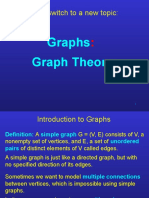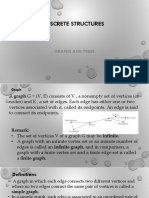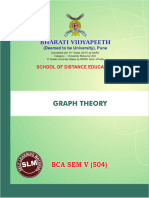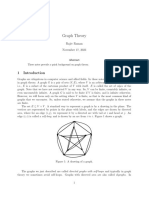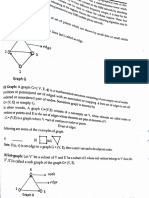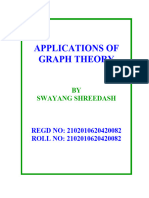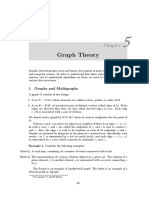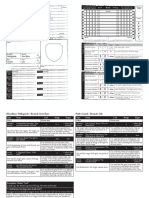0% found this document useful (0 votes)
65 views32 pagesDiscrete Structures Lecture 14
This document provides an overview of graph theory concepts including:
- Graphs are discrete structures used to represent relations among objects using vertices and edges.
- Graph theory originated from Leonhard Euler's solving of the Königsberg bridge problem in 1736.
- Key graph definitions include undirected graphs, directed graphs, multigraphs, pseudographs, and their applications like acquaintance graphs and influence graphs.
- Graph terminology is introduced such as adjacent vertices, degree, in-degree/out-degree, and the handshaking theorem relating the sum of degrees to the number of edges.
Uploaded by
Ali RazaCopyright
© © All Rights Reserved
We take content rights seriously. If you suspect this is your content, claim it here.
Available Formats
Download as PPTX, PDF, TXT or read online on Scribd
0% found this document useful (0 votes)
65 views32 pagesDiscrete Structures Lecture 14
This document provides an overview of graph theory concepts including:
- Graphs are discrete structures used to represent relations among objects using vertices and edges.
- Graph theory originated from Leonhard Euler's solving of the Königsberg bridge problem in 1736.
- Key graph definitions include undirected graphs, directed graphs, multigraphs, pseudographs, and their applications like acquaintance graphs and influence graphs.
- Graph terminology is introduced such as adjacent vertices, degree, in-degree/out-degree, and the handshaking theorem relating the sum of degrees to the number of edges.
Uploaded by
Ali RazaCopyright
© © All Rights Reserved
We take content rights seriously. If you suspect this is your content, claim it here.
Available Formats
Download as PPTX, PDF, TXT or read online on Scribd
/ 32





















